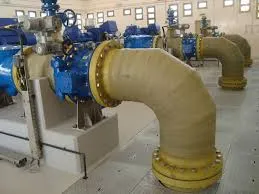
-
 Afrikaans
Afrikaans -
 Albanian
Albanian -
 Amharic
Amharic -
 Arabic
Arabic -
 Armenian
Armenian -
 Azerbaijani
Azerbaijani -
 Basque
Basque -
 Belarusian
Belarusian -
 Bengali
Bengali -
 Bosnian
Bosnian -
 Bulgarian
Bulgarian -
 Catalan
Catalan -
 Cebuano
Cebuano -
 China
China -
 China (Taiwan)
China (Taiwan) -
 Corsican
Corsican -
 Croatian
Croatian -
 Czech
Czech -
 Danish
Danish -
 Dutch
Dutch -
 English
English -
 Esperanto
Esperanto -
 Estonian
Estonian -
 Finnish
Finnish -
 French
French -
 Frisian
Frisian -
 Galician
Galician -
 Georgian
Georgian -
 German
German -
 Greek
Greek -
 Gujarati
Gujarati -
 Haitian Creole
Haitian Creole -
 hausa
hausa -
 hawaiian
hawaiian -
 Hebrew
Hebrew -
 Hindi
Hindi -
 Miao
Miao -
 Hungarian
Hungarian -
 Icelandic
Icelandic -
 igbo
igbo -
 Indonesian
Indonesian -
 irish
irish -
 Italian
Italian -
 Japanese
Japanese -
 Javanese
Javanese -
 Kannada
Kannada -
 kazakh
kazakh -
 Khmer
Khmer -
 Rwandese
Rwandese -
 Korean
Korean -
 Kurdish
Kurdish -
 Kyrgyz
Kyrgyz -
 Lao
Lao -
 Latin
Latin -
 Latvian
Latvian -
 Lithuanian
Lithuanian -
 Luxembourgish
Luxembourgish -
 Macedonian
Macedonian -
 Malgashi
Malgashi -
 Malay
Malay -
 Malayalam
Malayalam -
 Maltese
Maltese -
 Maori
Maori -
 Marathi
Marathi -
 Mongolian
Mongolian -
 Myanmar
Myanmar -
 Nepali
Nepali -
 Norwegian
Norwegian -
 Norwegian
Norwegian -
 Occitan
Occitan -
 Pashto
Pashto -
 Persian
Persian -
 Polish
Polish -
 Portuguese
Portuguese -
 Punjabi
Punjabi -
 Romanian
Romanian -
 Russian
Russian -
 Samoan
Samoan -
 Scottish Gaelic
Scottish Gaelic -
 Serbian
Serbian -
 Sesotho
Sesotho -
 Shona
Shona -
 Sindhi
Sindhi -
 Sinhala
Sinhala -
 Slovak
Slovak -
 Slovenian
Slovenian -
 Somali
Somali -
 Spanish
Spanish -
 Sundanese
Sundanese -
 Swahili
Swahili -
 Swedish
Swedish -
 Tagalog
Tagalog -
 Tajik
Tajik -
 Tamil
Tamil -
 Tatar
Tatar -
 Telugu
Telugu -
 Thai
Thai -
 Turkish
Turkish -
 Turkmen
Turkmen -
 Ukrainian
Ukrainian -
 Urdu
Urdu -
 Uighur
Uighur -
 Uzbek
Uzbek -
 Vietnamese
Vietnamese -
 Welsh
Welsh -
 Bantu
Bantu -
 Yiddish
Yiddish -
 Yoruba
Yoruba -
 Zulu
Zulu
frp underground tank
The Importance of FRP Underground Tanks A Comprehensive Overview
In recent years, the use of Fiber Reinforced Plastic (FRP) underground tanks has gained significant traction in various industries. These tanks, known for their durability and structural integrity, offer a range of benefits over traditional materials such as steel or concrete. As environmental protection and safety standards become increasingly stringent, FRP underground tanks emerge as a viable solution for storing liquids safely and efficiently.
The Importance of FRP Underground Tanks A Comprehensive Overview
Another significant benefit of FRP underground tanks is their lightweight nature. Traditional concrete or steel tanks are often cumbersome and require extensive foundations to support their weight. In contrast, FRP tanks can be installed with minimal excavation and site preparation, leading to reduced construction costs and time. Their lightweight design also facilitates easier transportation and installation, making them a practical choice for businesses aiming to streamline their operations.
frp underground tank

In addition to their durability and ease of installation, FRP tanks offer excellent thermal insulation properties. This quality is essential for companies storing temperature-sensitive materials, as it helps maintain optimal storage conditions. By minimizing temperature fluctuations, FRP tanks can preserve the integrity of the stored liquids, leading to improved overall product quality.
Moreover, the versatility of FRP materials allows for customization in tank design, enabling businesses to choose the best specifications for their unique needs. From size and shape to additional features such as secondary containment and monitoring systems, FRP underground tanks can be tailored to meet specific requirements, making them suitable for various applications across different industries.
Despite their numerous advantages, it is essential for companies to consider proper maintenance and inspection routines for FRP underground tanks. While these tanks are designed for longevity, regular checks can help identify potential issues early, ensuring continued safety and compliance with environmental regulations.
In conclusion, FRP underground tanks represent a robust solution for liquid storage needs in today's environmentally conscious landscape. Their corrosion resistance, lightweight design, thermal insulation capabilities, and customization options make them an ideal choice for industries that seek to balance operational efficiency with safety and environmental responsibility. As technology continues to advance, the adoption of FRP tanks is likely to expand, further solidifying their role in sustainable resource management.









